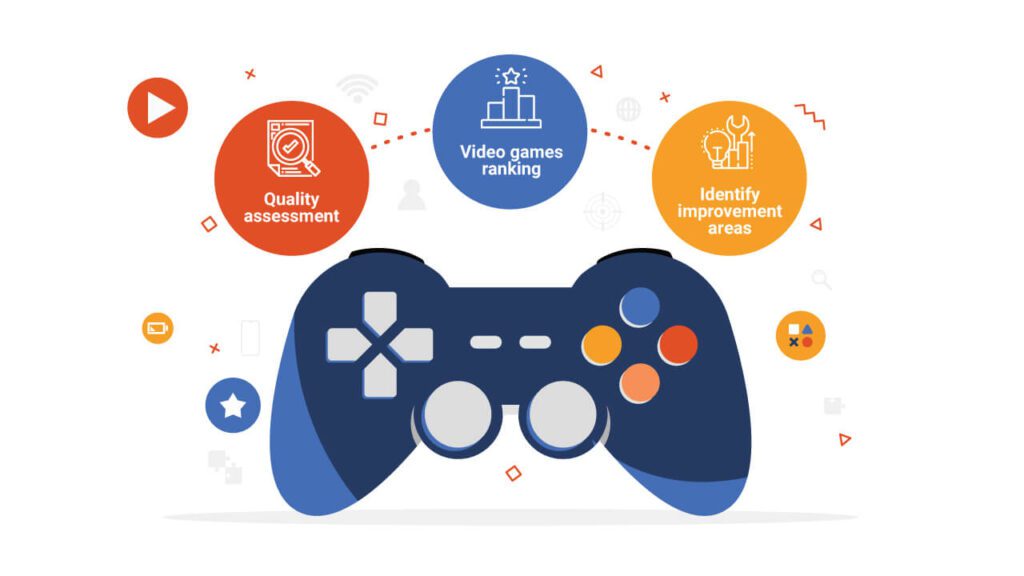Game development requires a deep understanding of software engines and gaming techniques. Software engines comprise game engines and physics engines. The former includes graphics rendering, AI, and physics simulations, while the latter features elements such as collisions, gravity, and friction. Game developers also use various techniques, including graphics, sound design, AI, and level design, to create immersive gaming experiences. Graphics techniques include physically-based rendering (PBR), while sound design entails the creation of a game’s music, sound effects, and voice acting. AI is used to create dynamic environments and opponents, while level design makes a game visually interesting and challenging for players.
Beyond the Basics: Advanced Concepts in Software Engines and Gaming Techniques
Introduction
Creating a fully-functioning video game requires a lot more than just coding some simple mechanics and graphics. Game development is a complex process that requires developers to have an in-depth understanding of advanced concepts in software engines and gaming techniques. In this article, we will dive into these topics and explore how game developers use them to create engaging and immersive games.
Software Engines
Software engines are the backbone of modern video games. They are the tools developers use to create, maintain, and optimize the code that runs the game. There are several different types of software engines, but the most common ones are game engines and physics engines.
Game Engines
Game engines provide developers with a framework for building video games. They include a wide range of features, including graphics rendering, physics simulations, sound and music, networking, and AI. Some popular game engines include Unity, Unreal Engine, and CryEngine.
When using a game engine, developers can focus on creating the unique elements of their game, such as the story, characters, and gameplay mechanics, without worrying about the underlying technical details. This saves a lot of time and effort and allows developers to create high-quality games without having to start from scratch.
Physics Engines
Physics engines are another important type of software engine in video game development. They simulate the physical interactions between objects in a game world, such as collisions, gravity, and friction. This allows developers to create realistic animations and physics-based puzzles and challenges.
Popular physics engines include Box2D, PhysX, and Bullet Physics. These engines are often integrated into game engines to provide a complete development framework.
Gaming Techniques
In addition to software engines, game developers use a wide range of techniques to create engaging and immersive gaming experiences. These techniques include everything from advanced graphics and sound design to AI and level design.
Graphics
Modern video games have incredibly detailed and realistic graphics. This is achieved through a combination of advanced rendering techniques, such as physically-based rendering (PBR), and high-quality asset creation.
PBR is a rendering technique that simulates the physical properties of materials, such as reflection and refraction. This allows game developers to create more realistic-looking objects and environments.
Creating high-quality assets, such as characters, props, and environments, is also crucial for creating immersive games. This requires skilled artists and designers who can create detailed and realistic 3D models and textures.
Sound Design
Sound design is another essential component of game development. Music, sound effects, and voice acting all contribute to the immersive quality of a game.
Modern games often have fully orchestrated soundtracks that complement the game’s story and atmosphere. Sound effects, such as weapon fire, footsteps, and explosions, add to the realism and immersion of the game world.
Voice acting is also an important part of game development, especially for games with complex narratives. Skilled voice actors can bring characters to life and create memorable performances that enhance the player’s experience.
AI
Artificial intelligence (AI) is another important aspect of game development. AI can be used to create challenging opponents, realistic animal behavior, and dynamic environments.
One popular AI technique is behavior trees. Behavior trees provide a framework for defining the behavior of non-player characters (NPCs) in a game. They allow developers to create complex decision trees that determine how NPCs should react to different situations.
Another AI technique is neural networks, which can be used to create more human-like behavior in NPCs. Neural networks allow NPCs to learn and adapt to different situations, making them more challenging opponents for players.
Level Design
Level design is the process of creating the environments and challenges that the player will encounter in a game. Good level design is critical for creating a fun and engaging gaming experience.
Level designers use a range of techniques to create environments that are both visually interesting and challenging for players. This includes things like strategic placement of enemies and obstacles, use of lighting and color, and pacing and flow.
Conclusion
Game development is a complex process that requires developers to have an in-depth understanding of advanced concepts in software engines and gaming techniques. Software engines like game engines and physics engines provide the foundation for game development, while gaming techniques like graphics, sound design, AI, and level design create the immersive gaming experiences we all love. By mastering these advanced concepts, game developers can create the next generation of engaging and immersive video games.
